美称无人机狙杀IS成员 击毙却是人道组织人士
中央社
9/11/2021
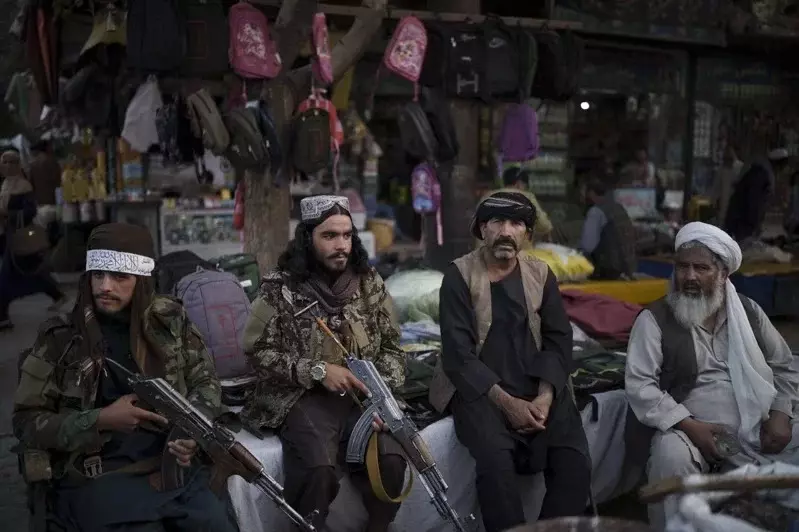
纽约时报今天报导,影片分析显示,美国在阿富汗最后一场空袭,可能误将目标锁定成一名援助人员而非伊斯兰国(IS)战士,导致10名平民丧生。
阿富汗首都喀布尔(Kabul)8月中沦陷塔利班(Taliban)后,喀布尔机场涌入大批逃难人潮,附近区域26日发生炸弹攻击,造成逾百人死伤,死者中包括至少13名美军,IS的地区主要分支「伊斯兰国呼罗珊省」(ISIS-K)宣称策画犯案。
最后一批美军8月30日撤出阿富汗,结束20年的阿富汗战争。五角大厦声称美军在撤离前夕,于8月29日派出「死神」(Reaper)无人机攻击,阻止IS另一次攻击计划。
喀布尔居民阿玛迪(Aimal Ahmadi)日前告诉法新社,这场空袭造成10名平民丧生,包括他的小女儿、侄子、侄女,以及他的兄弟艾兹玛瑞(Ezmarai Ahmadi)。艾兹玛瑞所驾驶的车子在刚停好后遭到空袭。
纽时分析监视器画面,指出美军可能是看到艾兹玛瑞和一位同事把水桶罐放上车子,并且拿一台笔电给他老板。西方支持的阿富汗政府垮台后,当地出现缺水情况。
亲戚们表示,艾兹玛瑞是总部位于美国加州的援助游说团体「国际营养与教育」(Nutrition and Education International)的电机工程师,他和数以千计阿富汗人一样曾申请赴美定居。
美方官员声称,无人机攻击后出现爆炸,显示当时目标车辆内有爆裂物。但纽时调查团队指出,没有第2次爆炸的证据,附近的大门只有一处凹痕,没有明显的额外爆炸迹象,例如墙壁被炸毁。
美方先前承认有3名平民丧生,但声称这场行动成功挡下另一场致命攻击。
美国国防部发言人柯比(John Kirby)对此回应指出,美军中央司令部(CENTCOM)会「持续评估」这场空袭,但强调「没有其他军队比我们更努力防止平民伤亡」。
柯比说:「正如(美国参谋首长联席会议)主席密利(Mark Milley)所言,这场空袭是根据可靠情资,我们仍然相信此举成功防止机场和我方仍在机场服务的男男女女所面临的迫切威胁。」
除纽约时报外,华盛顿邮报也拿空袭后现场影像与美军说法,让包括物理学家及前军方炸弹技师评估,并访谈死者艾兹玛瑞所属的援助团体。
综合分析后,华邮也认为没有证据显示遭美军空袭的车内含有炸弹或爆裂物,车辆被无人机打中所引发的爆炸不过是汽车油箱内油气被引燃所致。
惨不忍睹/美军无人机炸死喀布尔一家十口
大公报
8/30/2021
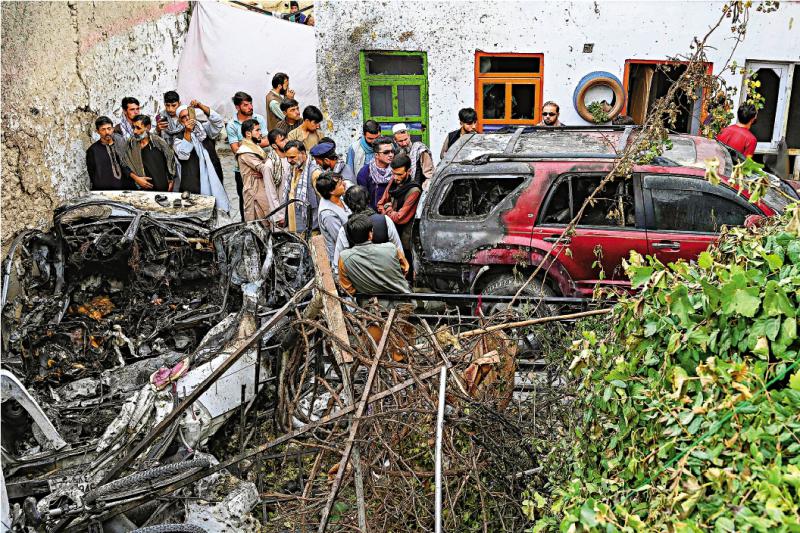
【大公报讯】综合美联社、《每日邮报》、CGTN报道:美国军方29日出动无人机,炸毁阿富汗喀布尔机场附近一辆企图发动恐袭的汽车,美媒引述目击者报道指,袭击亦造成10名无辜平民死亡,当中包括多名儿童,年龄最小者仅两岁。塔利班发言人穆贾希德30日接受中央广播电视CGTN记者采访时对美国的空袭行为表示强烈谴责,强调在其他国家任意发动袭击是非法的。
极端组织“伊斯兰国”阿富汗分支呼罗珊(ISIS-K)上周在喀布尔机场附近发动自杀式炸弹袭击,造成约170名阿富汗平民和13名美军人员死亡,拜登政府矢言报复。当地时间29日,美军第二次对喀布尔发动空袭,声称截击了一辆机场附近居民区载有自杀式炸弹袭击者的可疑汽车,解除了ISIS-K对机场的威胁。在29日回复大公报的邮件中,五角大楼还声称似乎没有迹象显示有平民伤亡。
尸体上满是鲜血弹片
但美国CNN网站引述遇难者家属报道,美军空袭造成喀布尔一家九口人丧生,包括6名儿童,最小的只有两岁。死亡数字数小时后上升至10人,遇难者都来自同一个大家庭。当地居民阿齐兹表示,爆炸发生在周日下午4时30分左右,这家人正好归家,车停在美军打击目标旁。阿齐兹赶到隔壁时目睹了可怕景象:空气中弥漫着浓烟,“尸体上满是鲜血和弹片,一些死去的孩子仍在车内。”
《华邮》指,10名遇难者中有8人在18岁及以下;一名死者亲属泪流满面地告诉BBC,孩子们被烧得面目全非,“我们无法辨认他们的尸体”。
苏玛.艾哈迈迪在这场灾难中失去了年仅两岁的女儿和3个儿子,她一边尖叫道:“我失去了我的女儿,失去了我的心”,她哭得伤心欲绝、几近昏厥,最后连话也说不出。苏玛的亲戚法亚兹说,“美国总说他们在击杀ISIS、‘基地’组织或塔利班,但又总攻击平民和儿童……我不认为他们是好人。”
目击者称现场无二次爆炸
美国中央司令部发言人厄尔班29日发表声明称,“没有迹象表明平民在空袭中丧生”,其后又改口说注意到有平民伤亡的相关报道,对此深感悲痛。不过厄尔班宣称,是空袭引发的汽车炸弹二次爆炸导致平民伤亡,但现场目击居民告诉中央广播电视总台记者,当时车内并没有爆炸物,完全是美军的轰炸导致附近居民死伤。
本港时间周二晚,五角大楼发言人柯比举行记者会,声称正在评估和调查有关平民伤亡的报道。柯比说,“我们知道在行动中造成无辜人员伤亡,我们也很透明。”但他坚称美军情报准确,相信有非常真实、具体和迫在眉睫的威胁针对喀布尔机场附近的军队和平民。
塔利班强烈谴责美军空袭
塔利班发言人穆贾希德30日接受中央广播电视CGTN记者采访时表示,塔利班对美国的空袭行为表示强烈谴责,在其他国家任意发动袭击是非法的。美国中央司令部的推文下亦是一片谴责声,有网友质疑,“怎么可能收到关于有爆炸物汽车的信息,却没有关于周围有平民、可能引发伤亡的信息?”亦有人直言美国杀害无辜平民犯下战争罪。
当地时间30日,多枚火箭弹射向喀布尔机场,被机场的导弹防御系统拦截。据悉,火箭弹由一辆装有自制火箭管的汽车发射,未造成人员伤亡。ISIS-K承认发动这次袭击,声称武装分子发射了6枚火箭弹。
白宫同日表示,过去24小时内美军用26架运输机接走了约1200人,迄今共撤离超过12.2万人。美国有能力将尚在等待撤离的300名美国人全数接走。另外,包括美、英、法等98个国家,联同欧盟和北约发表联署声明,指获塔利班保证,所有外国国民和具有相关国家授权的阿富汗人,可以安全有序抵达机场等出境点,前往其他国家。
美无人机炸毁阿富汗一满载炸药汽车
来自 / 联合早报
8/29/2021
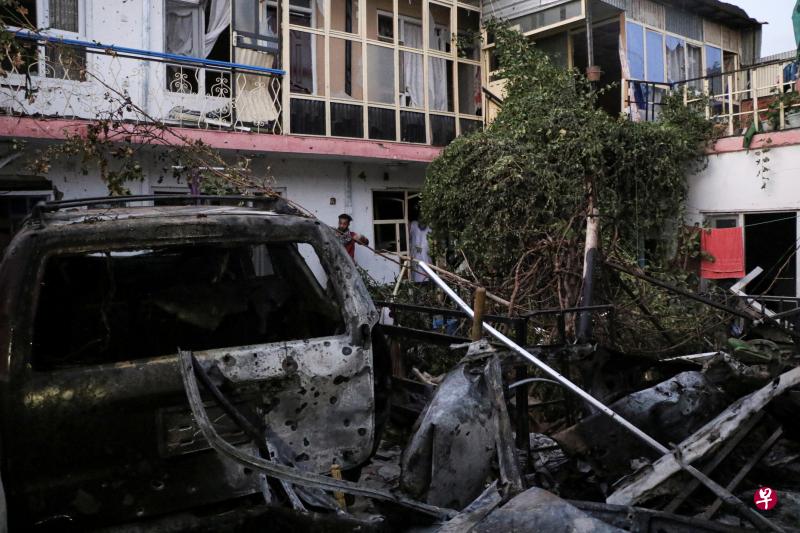
美军人员说,该汽车与上周袭击喀布尔机场的“伊斯兰国呼罗珊分支”有关。目击者说,喀布尔机场以北住宅区发生了爆炸。
(喀布尔综合电)美国总统拜登警告阿富汗喀布尔机场很可能再度发生恐怖袭击后,美军昨天再次出动无人机炸毁了一辆满载炸药、意图袭击喀布尔机场的汽车。
美军人员说,该汽车与上周袭击喀布尔机场的“伊斯兰国呼罗珊分支”有关。目击者说,喀布尔机场以北住宅区发生爆炸。
随着美军撤离喀布尔的期限日益逼近,美军评估认为,喀布尔机场局势仍“极端危险”。拜登周六在与国家安全团队讨论阿富汗局势后发表声明说,喀布尔机场很可能在24至36小时内再次遇袭。
拜登说,他已要求美国军方采取一切可行措施优先实现部队防护,确保拥有所有权限、资源和计划保护现场美军。
美国驻阿富汗大使馆也敦促美国公民,避免前往喀布尔机场和避开所有机场入口处。
上周四,喀布尔机场外发生自杀式炸弹袭击,造成上百名阿富汗平民伤亡,美军人员13死18伤。美军在48小时内反击,出动无人机在阿富汗东部与巴基斯坦接壤的楠格哈尔省击毙了伊斯兰国呼罗珊分支的两名高级成员,并致另一人受伤。
塔利班谴责美国的袭击行动。发言人说:“美国人应该在发动空袭之前通知我们。这是对阿富汗领土赤裸裸的攻击。”
不过,伊斯兰国袭击喀布尔机场迫使美军和塔利班进行合作以确保机场安全;这在两周前是不可想象的。据记者观察,塔利班封锁了通往机场的道路,只让获批准的巴士通过。塔利班战士在阿富汗人下巴士后,护送他们进入机场主要大厅交给美军。
驻守喀布尔机场一名西方安全官员说,美国警告喀布尔机场将再度遇袭后,聚集在机场大门外的阿富汗人就消失了。他昨天说,机场只剩下1000多个平民等待撤离。“我们希望今天撤走所有外国平民和处境危险的人。一旦完成工作,军队也会离开。”
拜登已表明将在周二(31日)的期限之前撤出所有美军。一名美国官员上周六说,机场内只剩下不到4000名士兵,少于撤侨任务高峰时的5800人。
塔利班发言人穆贾希德周六说,塔利班将在美军撤出后“很快”接管机场。塔利班文化委员会成员萨曼贾尼说,塔利班已经控制喀布尔机场三个入口处。
据统计,自8月14日以来,由美军主导的阿富汗撤离行动已撤出约11.7万人。但还有数万有意离开阿富汗的人被留下。
美国国家安全顾问沙利文昨天说,塔利班已私下和公开表示,将在周二期限后继续允许美国人和其他人安全离开阿富汗。
法国总统马克龙说,已“开始与塔利班”磋商在8月31日后继续“保护和遣送”生命受威胁的阿富汗人事宜。他透露,周一将与英国一道在联合国安理会紧急会议上提议,在喀布尔建立一个联合国控制下的“安全区”,让人道主义行动可以继续下去。
拜登:喀布尔未来一两天可能再发生恐袭
文 / 赖筱青
8/28/2021
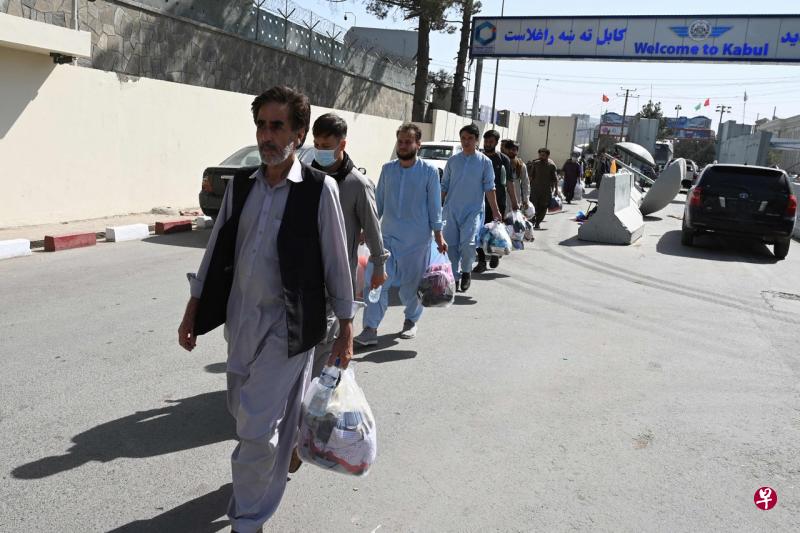
(早报讯)美国总统拜登说,美军方评估认为,未来24小时至36小时阿富汗首都喀布尔很有可能再次发生恐怖袭击。
拜登周六(8月28日)与国家安全团队讨论阿富汗局势后发表声明说,喀布尔局势仍然“非常危险”,喀布尔机场存在很高的恐袭威胁。美军指挥官汇报说,喀布尔机场未来24小时至36小时很有可能再次发生恐袭。
拜登说,他已要求美国军方采取一切可行措施优先实现部队防护,确保其拥有所有权限、资源和计划保护现场美军。
喀布尔机场外26日发生自杀式炸弹袭击事件,造成美军13人死亡、18人受伤,另有至少170名阿富汗平民死亡。美国认为极端组织“伊斯兰国”阿富汗分支实施了此次袭击。
美军无人机27日在阿东部楠格哈尔省对“伊斯兰国”阿富汗分支目标实施空袭。美军联合参谋部官员泰勒28日说,该组织两名高级成员在空袭中死亡,另有一人受伤。
连日来,美国和其盟友在喀布尔机场展开大规模人员撤离行动。美国白宫28日上午说,自8月14日以来已有超过11万人撤出。根据美方计划,其撤离行动将于8月31日结束。五角大楼发言人柯比说,美军已开始最后阶段撤出。
拜登今年4月宣布,驻阿美军5月1日开始撤离,9月11日前完全撤出。7月他又表示,美国在阿富汗的军事任务将于8月31日结束。8月15日,塔利班进入并控制喀布尔,宣布“阿富汗的战争已经结束”。
美空袭ISIS-K”策划者” 阿媒体公布事发现场画面
来源:环球网资讯
8/28/2021
美军对极端组织“伊斯兰国”(ISIS)分支“ISIS-K”恐怖分子实施了空袭。阿富汗当地媒体Asvaka通讯社28日公布了事发现场图片。
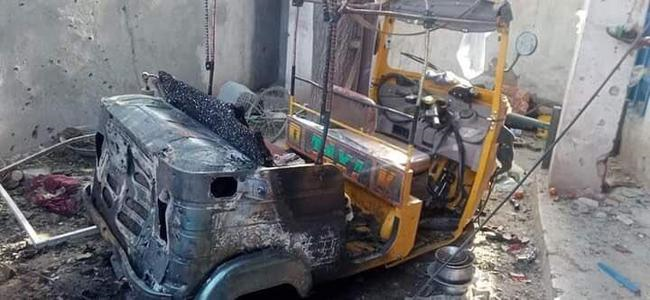
Asvaka通讯社推特消息称,当地时间28日凌晨0点,一架美军无人机袭击了楠格哈尔省的一栋房子。美军说,“伊斯兰国”一名重要成员在空袭中丧生,他是喀布尔机场袭击事件的“策划者”。
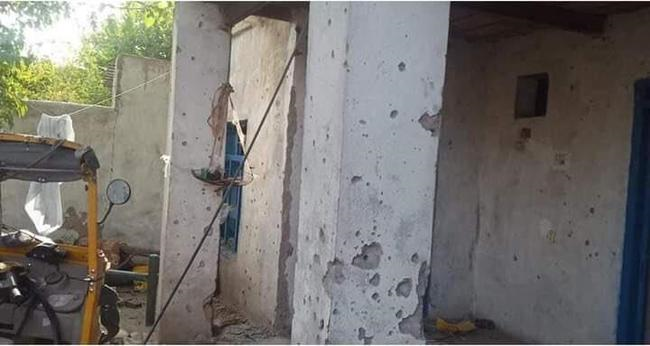
美联社早前消息,五角大楼称,美国在阿富汗对极端组织“伊斯兰国”(ISIS)分支“ISIS-K”的一名“策划者”实施了空袭打击,目标人物被击毙。报道称,据称此人参与了在喀布尔对美国发动袭击的计划。英国《卫报》称,一位不愿透露姓名的美国防部官员说,拜登(专题)授权了空袭行动,是国防部长奥斯汀下令进行的。
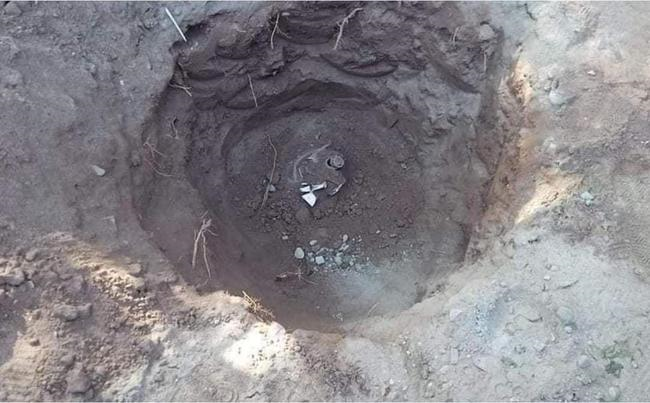
快讯!美军空袭一名ISIS-K的“策划者”,目标人物死亡
来源:环球网
8/27/2021
【环球网快讯】据美联社刚刚消息,五角大楼称,美国在阿富汗对极端组织“伊斯兰国”(ISIS)分支“ISIS-K”的一名“策划者”实施了空袭打击。报道称,据称此人参与了在喀布尔对美国发动袭击的计划。英国《卫报》称,一位不愿透露姓名的美国防部官员说,拜登授权了空袭行动,是国防部长奥斯汀下令进行的。

报道称,美国中央司令部发言人比尔说,美国在阿富汗楠格哈尔省对一名“伊斯兰国”成员发动了无人机袭击,“我们杀死了目标”。报道称,据称此人参与了在喀布尔对美国发动袭击的计划,尚不清楚此人是否具体参与了喀布尔机场外的自杀式炸弹袭击。
“美国军队今天对一名ISIS-K策划者进行了超视距反恐行动。此次无人机空袭发生在阿富汗的楠格哈尔省,”这位发言人说,“据我们所知,没有造成平民伤亡。”
当地时间26日傍晚,阿富汗首都喀布尔国际机场外突发自杀式炸弹袭击事件。极端组织“伊斯兰国”当天在其网站上宣布对该事件负责,声称其袭击目标是“美军的翻译与合作者”。美国《华尔街日报》27日消息称,喀布尔机场外的爆炸事件已经造成超100人死亡,其中包括至少13名美国军人和90名阿富汗人。
爆炸事件发生后,拜登曾表示,美国将对极端组织“伊斯兰国”(ISIS)的分支“ISIS-K”追杀到底并让其付出代价,美军可以在任何时间对该组织的任何基地进行打击。
当地时间8月27日,美国白宫发言人普萨基在当日的例行发布会上表示,美国总统拜登不希望阿富汗喀布尔机场爆炸事件的幕后主使继续“活在地球上”。
拜登:美在阿境待愈久 遭受伊斯兰国攻击风险愈高
来源:中央社
8/24/2021
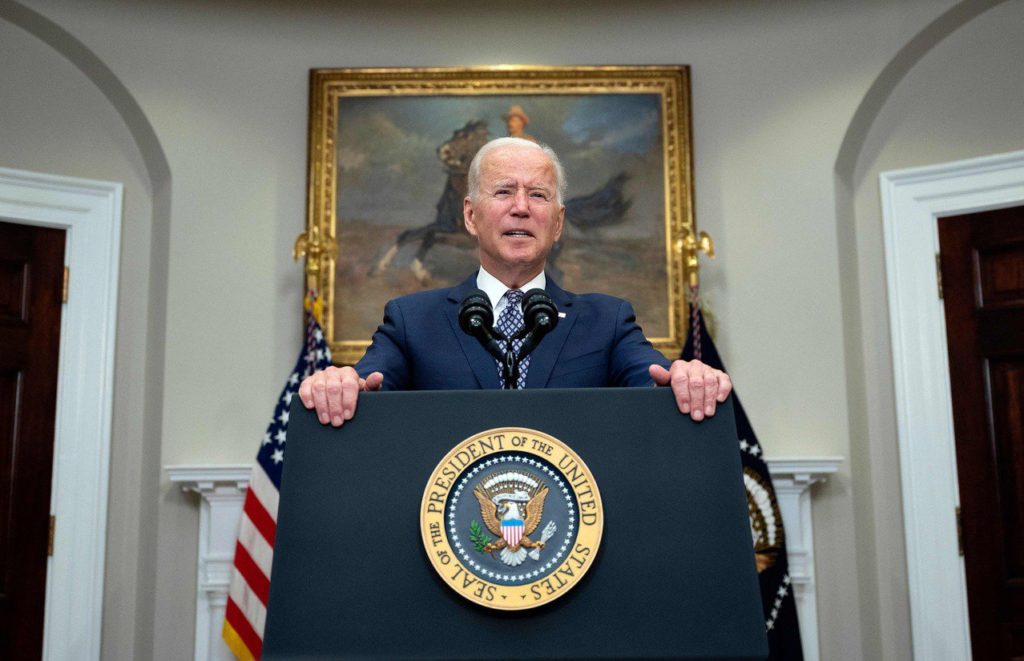
拜登总统表示,美国在阿富汗待得愈久,遭受恐怖团体“呼罗珊伊斯兰国”(Islamic State-Khorasan)攻击的风险就愈大。(Getty Images)
美国总统拜登今天表示,由于伊斯兰国(Islamic State)在阿富汗的分支威胁日增,美国必须很快完成从阿富汗的空运撤离行动,并可望在8月31日或之前完成这项行动。
他表示,美国在阿富汗待得愈久,遭受恐怖团体“呼罗珊伊斯兰国”(Islamic State-Khorasan)攻击的风险就愈大。
他指出,美国在阿富汗多待一天,锁定喀布尔机场,寻求攻击美军和盟军的呼罗珊伊斯兰国就多一天下手机会。
拜登今天告诉七大工业国集团(G7)领袖,如果塔利班(Taliban)配合,美国正朝在8月31日或之前从阿富汗完全撤离的方向前进。
Aug 24, 2021
Inside Reach 871, A US C-17 Packed With 640 Afghans Trying to Escape the Taliban
The Air Force evacuation flight from Kabul to Qatar came near the record for most people ever flown in the Boeing airlifter.
By TARA COPP and MARCUS WEISGERBER
8/16/2021
A U.S. Air Force C-17 Globemaster III safely evacuated some 640 Afghans from Kabul late Sunday, according to U.S. defense officials and photos obtained by Defense One.
That’s believed to be among the most people ever flown in the C-17, a massive military cargo plane that has been operated by the U.S. and its allies for nearly three decades. Flight tracking software shows the plane belongs to the 436th Air Wing, based at Dover Air Force Base in Delaware.
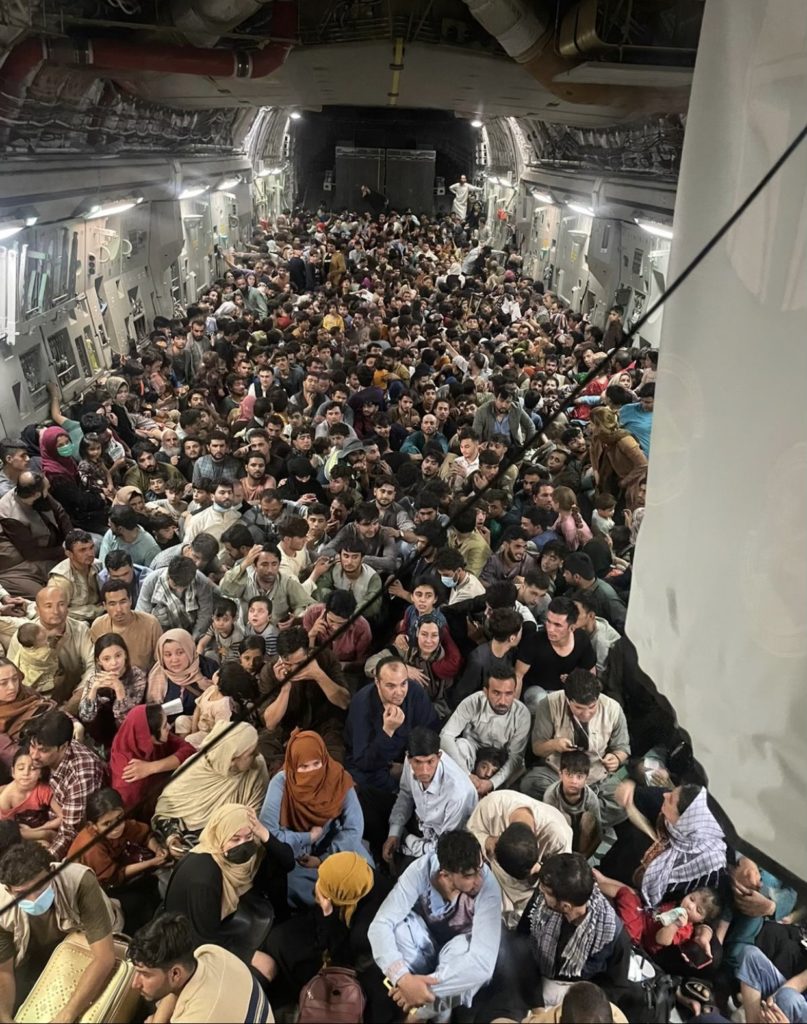
Aug 16, 2021
Comparisons are being drawn between the rush to escape Kabul after the Taliban takeover and the evacuation of Saigon at the end of the Vietnam War.
There were chaotic scenes at Kabul Airport as hundreds of people attempted to flee Afghanistan. People were filmed climbing on to airplanes and running across the tarmac in an attempt to secure a seat on a flight out of the capital.
These scenes appeared akin to the evacuation from Saigon in 1975, when hundreds of Vietnamese and Americans flocked to the US Embassy to be airlifted out of the country when the Vietnam War ended.
The C-17, using the call sign Reach 871, was not intending to take on such a large load, but panicked Afghans who had been cleared to evacuate pulled themselves onto the C-17’s half-open ramp, one defense official said.
Instead of trying to force those refugees off the aircraft, “the crew made the decision to go,” a defense official told Defense One. “Approximately 640 Afghan civilians disembarked the aircraft when it arrived at its destination,” the defense official said.
Word of the flight spread across late Sunday in the United States when audio from the crew estimating they were carrying 800 passengers was posted online. A defense official, speaking on the condition of anonymity, said the true number was about 640 people.
The flight was one of several that was able to take off with hundreds of people aboard, and some of the others may have had an even larger load than 640, the official said.
In 2013, a C-17 evacuated 670 people fleeing a typhoon in the Philippines. Like that evacuation, the Afghans flown from Kabul to Al Udeid Air Base in Qatar, sat on the floor of the plane’s capacious hold. The procedure is known as “floor loading”; the passengers hang onto cargo straps run from wall to wall serving as makeshift seatbelts, according to a source familiar with the plane’s operating manuals.
Aug 16, 2021
Thousands of Afghans have amassed on the tarmac at Kabul’s international airport in the hours after the Taliban captured the capital.
The chaotic scenes Monday at Hamid Karzai International Airport captured by news crews and cellphones convey a terror and desperate rush to escape the country, which is now overrun by Taliban militants in the lead-up to the complete departure of U.S. forces.
A video shared on Twitter appears to shows large crowds of people, including children, moving toward passenger aircraft on the tarmac.
“No one can really leave,” Kamal Alam, a nonresident senior fellow at the Atlantic Council and senior adviser to the Massoud Foundation, told CNBC in a phone interview. Alam was stuck in Afghanistan, his flight out of the country canceled. “If you don’t have a visa or passport, which the majority of Afghans don’t, you’re not going.”
Afghan President Ashraf Ghani fled the country on Sunday evening, reportedly to Tashkent, Uzbekistan, as the Taliban entered the presidential palace and declared the war “over.” Ghani said he fled to prevent “a flood of bloodshed.”
“The Taliban have won with the judgment of their swords and guns, and are now responsible for the honor, property and self-preservation of their countrymen,” Ghani said.
The rapid departure of high-ranking Afghan officials — along with substantial amounts of cash — in recent days is what initially prompted the rush to leave and a flood of anger at the Afghan government, Alam said. He was at Hamid Karzai International Airport a few days ago.
“All the VIPs were being allowed to fly out first, all their cash was being transported first … whether on commercial airlines or private jets from [an] unnamed Gulf country,” he said, not specifying the country due to the sensitive nature of the issue.
“So people were seeing this, there was a lot of resentment and anger from the airport security, and that is really where the rot started. That’s when people started saying this government and this president is not worth defending, let’s get out of here.”
The panic is unfolding as an expanded force of about 6,000 U.S. troops return to the country to evacuate Western diplomats. The forces were tasked, according to the State Department, with the “very narrowly focused mission” of evacuating embassy staff in Kabul. As of late Sunday, the U.S. Embassy was effectively moved into the airport.
“We can confirm that the safe evacuation of all Embassy personnel is now complete,” State Department spokesperson Ned Price said in a statement Monday. “All Embassy personnel are located on the premises of Hamid Karzai International Airport, whose perimeter is secured by the U.S. Military.”
Before Sunday, Kabul was the last major city to have been spared takeover by the militants.
A Taliban spokesperson said the fighters intended to negotiate a “peaceful surrender” of the city.
Since President Joe Biden’s April decision to withdraw U.S. troops from Afghanistan before Sept. 11, the Taliban have made stunning battlefield advances with now the entirety of the nation of 38 million people under their control.
The rapid disintegration of Afghan security forces and the country’s government have shocked the world and led many to question how a collapse could happen so quickly after two decades of American nation-building and training efforts.
Aug 16, 2021
The Afghan president has fled the country, and U.S. troops have taken control of the city’s airport where thousands of Afghans are also desperate to leave.
Aug 16, 2021
There have been scenes of panic at Kabul airport as desperate residents try to flee following the seizure of the Afghan capital by the Taliban.
Witnesses say at least three civilians died on Monday in the chaos at the airport, which is being secured by US troops. It is not clear whether they were shot or died in a stampede.
With scheduled flights suspended, many foreigners and Afghans are stranded.
The US and other countries are rushing to evacuate staff and allies.
Abandoning Afghan Allies: The Latest Chapter in Shameful History of US in Afghanistan
By Susan Akram
8/15/2021

The United States is withdrawing, messily, from its longest war. The last U.S. and NATO troops are expected to depart by the end of the month – though recent developments may accelerate this timeline. With the pullout of the remaining soldiers and evacuation of the U.S. embassy comes renewed assessments about the costs and consequences of the U.S. intervention in Afghanistan. The toll of the last two decades – an estimated $2 trillion and tens of thousands of lives lost – does not capture the full costs of this 20-year war. Costs will continue to accrue to the millions of civilians who will be uprooted by further instability and increased violence that will ensue, perhaps most acutely to thousands of Afghans who have aided U.S. and NATO troops. U.S. policymakers are now grappling with how to evacuate some Afghans who served alongside NATO troops. But the emergency evacuation of the few allies who can qualify for this assistance will not be enough to avert catastrophe. Indeed, the fate of those Afghans who worked with and for U.S. forces in Afghanistan must be assessed in the wider context of their role in supporting an illegitimate U.S. invasion and long-term troop presence in their country.
This article examines the failures of U.S. refugee assistance programs so far in the context of the long U.S. presence in Afghanistan. The origins of the current refugee crisis should not be lost in the urgency of the moment: the United States is directly responsible for much of the current chaos and many of its past actions placed Afghans in jeopardy during decades of war dating back to the 1970s, in addition to the specific threats to those who are targeted for having aided U.S. forces. If the United States is to avoid adding yet another chapter to its shameful history in Afghanistan, it must massively expand programs to bring Afghans to safety.
Short History of U.S. Intervention and Invasion of Afghanistan
Without a doubt, Afghans have already paid the heaviest price in what for them has not been a 20 but a 40-year conflict – Afghanistan has essentially been at war since 1979. The first U.S. intervention in Afghanistan began then, too, following a coup that brought a Marxist-leaning government to power in 1978. In July 1979, President Jimmy Carter authorized a joint CIA operation with Pakistani intelligence services (ISI) to fund the mujahideen, Afghan fundamentalist militants, in their fight against the newly installed Afghan Marxist government. Although it is widely claimed that U.S. intervention in Afghanistan followed and was aimed at stopping the Russian invasion, the Russians entered Afghanistan in December 1979 – over five months after U.S. covert operations in Afghanistan and Pakistan had already begun. U.S. military and economic assistance to the mujahideen and Pakistani military and intelligence forces between 1979 and the 1990s amounted to approximately $20 billion, initially through the Carter-Brzezinski covert funding program code-named Operation Cyclone, and later through years of U.S. assistance to Pakistan to support Afghan militants. Eventually, the United States’ stated goal of forcing the Russians out of Afghanistan succeeded; in 1989 the Russians withdrew, ushering in a long, multi-phased civil war between mujahideen factions that ended with the most extreme group taking over Afghanistan in 1996: the Taliban.
Among the beneficiaries – indirectly if not directly – of the massive U.S. assistance through Operation Cyclone were al Qaeda and the most radical faction of the mujahideen, the Taliban. During their brutal rule from 1996-2001, the Taliban allowed the militant organization al Qaeda and its Saudi leader, Osama bin Laden, to establish its base of operations in Afghanistan, where both the Taliban and al Qaeda purchased or acquired U.S.-supplied weaponry from Pakistan. Throughout the 1990s, Al Qaeda cultivated its grievances with the West to draw recruits from across the world to organize, train, and carry out terrorist attacks against the United States. Their operations in Afghanistan culminated, of course, with the hijacking and crashing of airplanes into the World Trade Center and the Pentagon on Sept. 11, 2001 causing the deaths of almost 3,000 Americans. This attack led to the U.S. decision to attack and invade Afghanistan a month later.
Seeking Refuge from Invasion and Occupation
The Bush administration publicly justified its Oct. 7, 2001 air strikes and subsequent invasion of Afghanistan as self-defense. However, it is contested whether the use of armed force by the United States and its allies against Afghanistan for a terrorist attack carried out by al Qaeda rested on a valid claim of self-defense consistent with the U.N. Charter. The subsequent U.S.-led air strikes and bombings led to the deaths of thousands of Afghan civilians – at least as many as the number of Americans killed on Sept. 11. Following the invasion, the Bush administration initiated a massive detention, torture and extraordinary rendition policy, with Afghans becoming victims of torture and suffering years of detention without charge or trial, including those who were subject to long-term detention at Guantanamo.
The invasion led to a formal occupation, followed by an extended, large-scale troop presence in Afghanistan. During the Obama administration, both U.S. and NATO troop levels were massively increased – and both U.S. and Afghan casualties doubled. The Obama administration’s expansion of the drone program led to the tracking of thousands of individuals and by the end of his term, Obama had authorized a program that led to the killing of “at least 3,000 suspected militants and hundreds of civilians.” The expanded drone program also authorized the CIA to use drones to kill suspected militants through signature strikes in Afghanistan, Pakistan, and other countries. Meanwhile, countless civilians and detainees were subjected to abuse, and in some cases war crimes, by U.S. forces, CIA units, allies, warlords, and corrupt Afghan officials.
The Brown-Boston University Costs of War Project and the Bureau of Investigative Journalism, among other researchers, have tracked civilian casualties from air and drone attacks in Afghanistan over the course of the conflict. The Costs of War Project found that in 2019 alone about 700 Afghan civilians were killed by airstrikes (at least 546 of those attributed to international forces) while Save the Children provided data that between 2005-2019 26,025 Afghan children were maimed or killed by airstrikes, shelling, and bombings by all parties to the conflict. The U.N. annual reports found anti-government forces responsible for the majority of civilian casualties over the years (noting, inter alia, those forces’ deliberate targeting of civilians), the Afghan national security forces responsible for a majority of the remainder of civilian casualties, and the international forces led by the United States accounting for a significant share as well.
This short summary barely scrapes the surface of the complicated history of U.S. involvement in Afghanistan and Pakistan, and the countable and uncountable consequences of it. But this account helps to explain that the costs of this conflict must be placed in a longer and wider historical context.
Massive Forced Displacement of Afghans
The mass displacement and exodus of Afghans over the past few decades must also be put in this context. From 1979 onwards, Afghan refugees have constituted one of the largest refugee populations in the world, and one of the most protracted. During the 1980s and 1990s, over six million Afghan refugees fled the country, primarily hosted by Iran and Pakistan for about two decades. After the Soviet withdrawal, some returned, but renewed displacement followed the Taliban takeover and by the end of 2019, Afghans comprised the third-largest population of forcibly displaced persons in the world. Currently, Turkey, Pakistan and Iran are hosting the vast majority of Afghan refugees, as Europe and the United States maintain restrictive policies to prevent Afghan and other refugees from arriving to their shores and seeking asylum.
Despite being one of the main drivers of Afghan displacement and of the loss of Afghan lives over the last four decades, the United States has taken very little responsibility for either. Between 1987 and 2015, for example, only 16,400 Afghan refugees were granted resettlement slots to the United States. Compared to Iran and Pakistan’s hosting of over 3 million Afghan refugees each for decades, the United States’ welcome towards Afghans fleeing a conflict the United States has helped to both initiate and exacerbate hardly bears mention.
Most recently, Afghans were only one among the global refugee populations that suffered significantly from Trump administration decisions that placed new and extreme restrictions on refugee resettlement and immigration to the United States. Although Afghans were not categorically barred entry under the Trump administration’s 2017 Executive Order 13769 (the so-called Muslim ban), the order suspended all refugee admissions for 120 days, and then lowered the admissions numbers yearly until the historically unprecedented low of 18,000 in 2020. Even then, fewer than 12,000 were admitted. Despite promises to rebuild the refugee admissions program by the Biden administration, fiscal year 2021 will again see shockingly low refugee admissions: as of July 31, the United States had welcomed only 6,246 refugees since Oct. 2020. Since January 2021, only 460 Afghans have been admitted as refugees.
The U.S. Afghan SIV Program
Aside from the (anemic) refugee admissions process, the U.S. government has established two separate special visa programs for Afghan nationals who have worked for U.S. forces or allies in Afghanistan, one temporary and one permanent. The first was created in 2006 under Section 1059 of the National Defense Authorization Act, authorizing Special Immigrant Visas for Iraqi and Afghan nationals who worked as translators or interpreters for U.S. Armed forces for at least one year. This permanent program has been amended several times, including to extend eligibility to Afghan translators and interpreters working with U.S. Chief of Mission (U.S. embassy and diplomatic missions), but the program retains a 50 per year cap for Afghan translators.
In belated recognition that many more Afghans than just translators and interpreters have become particularly vulnerable because of their work with U.S. entities in Afghanistan, Congress passed the Afghan Allies Protection Act in 2009 to resettle Afghans who were employed by the U.S. government or its allied forces and whose lives were at risk, regardless of their position with the coalition. The Act initially required at least one year of employment with the U.S. government in Afghanistan on or after October 7, 2001. Visas under this program were capped at 1,500 annually, but the numbers have been increased several times to the current cap of 26,500. Unused numbers can be carried over from one year to the next, and the program terminates when all allocated visa numbers are used. The deadline for all applications under this temporary program is December 31, 2022.
Essentially, both programs authorize Special Immigrant Visas for Afghan nationals who were employed in Afghanistan by or on behalf of the U.S. government, or by the International Security Assistance Force (ISAF), whether as interpreters or in performing sensitive activities for any U.S. personnel. The programs require at least one year of the requisite employment between October 2001 and December 2022, or a minimum of two years of eligible employment for petitions filed after September 30, 2015. In addition, individuals must provide evidence of ongoing serious threats “as a consequence” of this U.S. employment.
The Flaws of the SIV Programs
These two programs have been amended several times, supposedly to make the visa issuance process more efficient. However, a number of credible assessments of the program have concluded that the process offers too few visas, includes onerous requirements that most of those eligible cannot satisfy, is rife with corruption, places applicants at greater risk, and has so many built-in delays and hurdles that the most of those at greatest risk cannot apply.
First, the visa numbers allocated have been low, and, like overall refugee admissions quotas, the Afghan SIV ceilings have never been met. From FY 2009 to FY 2019, 18,471 visas were available annually, but according to the Office of Inspector General (OIG) report, by September 2019, 18,864 of those visas (including those unused ‘rolled over’ from prior years), remained “in process.” The latest renewals and amendments of both programs were in December 2020, when another 4,000 visas were approved for Afghan applicants, for the current total of 26,500. However, this number was insufficient even for those whose applications were in the pipeline. The current backlog of pending applications is over 19,000, and there is inadequate staffing throughout the offices that process them to come close to dealing with the backlog.
Moreover, the visa numbers fail to even approach the numbers of Afghan translators and other contractors who have worked closely with U.S. and ISAF forces in Afghanistan. U.S. military statistics show the dramatic rise in the use of contractors working with the U.S. military – at the height of the surge in U.S. forces in Afghanistan, one contractor was hired for every U.S. military member. As the drawdown has reduced troop levels, there have been as many as five contractors for every service member. Although contractors of many nationalities are hired, the vast majority in Afghanistan have been Afghan. These ratios illustrate that for many thousands of Afghans who have worked for the United States and who could qualify, there will be no visas available.
The low numbers are a serious enough problem, but the onerous requirements and delays are even more problematic to the success of the program. Completing the application requires documentation to prove both “faithful and valuable service” to the U.S. government or allied forces and an “ongoing serious threat” due to that service. To prove the service aspect, the individual must obtain a positive letter of recommendation from a senior supervisor. To prove the threat aspect, the individual has to produce hard credible evidence that his or her life or safety has been threatened and there is an ongoing and urgent risk of harm. But throughout the program’s history there have been systematic barriers to securing the documentation needed to prove each of these elements.
One of the few studies based on direct interviews with Afghans eligible for or who have applied for the SIV Program details the serious problems applicants have with obtaining the required documentation. Interviewees pointed out that there has been such rapid turnover of military deployed in Afghanistan that most Afghans have trouble tracking down supervisors once they have left Afghanistan. They have problems identifying a supervisor who has known them well enough to provide the recommendation, or even getting responses to their recommendation requests. Another complicated requirement is the definition of who is a “contractor,” which is often applied to exclude a wide range of sub-contractor and affiliate employment relationships. Meanwhile, the requirement to prove an ongoing and serious threat is skewed towards those who receive actual written threats from the Taliban – as opposed to the many verbal, telephone, and “community threats” Afghans who have worked with the United States and their family members encounter that cannot be reduced to written documentation. These documentation requirements have been so difficult to fulfill that an entire industry has sprung up to manufacture “threat letters” and assist applicants in preparing for interviews.
Ongoing Risks, U.S. Responsibility
On July 15, the White House announced that 20,000 Afghans have applied for SIVs so far, although there may be as many as 100,000 Afghans eligible for them. In an effort to expedite evacuations, in addition to the 2,500 SIV-holders who will be able to travel directly to the U.S., the White House has signaled that about 10,000 Afghans applicants with pending background checks will be flown to other countries or to U.S. military bases elsewhere while their visas are processed. Congress has proposed measures, including the HOPE for Afghan SIVs Act that would postpone the requirement for a medical exam until the individuals arrive Stateside; the bill passed the House but is stalled in the Senate. These are steps in the right direction, but should have been contemplated long before the imminent withdrawal of all U.S. troops.
The risks faced by Afghans who have worked in any capacity with the U.S. government or military in Afghanistan are real. The organization No One Left Behind has documented at least 300 Afghan interpreters or their family members killed, while another NGO, Red T, claimed that over 1,000 interpreters had been killed (in both Iraq and Afghanistan) by 2015. As the events of the last few days have shown, thousands more lives will be in greater danger once U.S. forces completely withdraw.
In many ways, the U.S. has left Afghanistan and the Afghan people in as bad or worse condition than when the 2001 conflict began. Nevertheless, in the absence of a stable, democratic government with territorial control over all of Afghanistan, the United States must do more to ensure that more Afghans do not become victims of its longest war. In the short term, the United States must at a minimum accept far more Afghan refugees who are awaiting resettlement, increase the visa numbers for all those who have worked alongside U.S. forces, and expedite processing for all who are eligible under these programs.
美前高官傅立民:美正与中国打着注定会输的比赛
5/10/2021
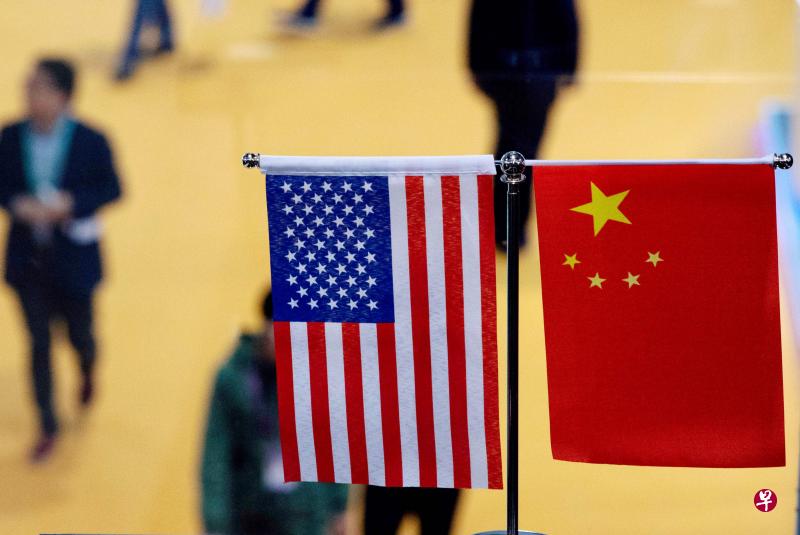
美国前资深外交官、前助理国防部长傅立民(Chas W Freeman Jr)批评美国政府的对华政策“自欺欺人”(self-defeating),指华盛顿正在打一场注定会输的对华比赛。
傅立民周日发表在澳洲亚太事务研究网站东亚论坛( East Asia Forum)上发发表题为《华盛顿正在打一场注定会输的对华比赛(Washington is playing a losing game with China)的文章,指美国应在全球性问题上加强与中国的合作,如果继续选择与中国对抗,只会在国际社会上失道寡助。
他认为目前的美中关系,凸显了弗里曼的战略动力学第三定律(Freeman’s third law of strategic dynamics),即每一次敌对行为都会引来更加敌对的反应。
文章指华盛顿发起贸易战,只是因为对中国超越美国的潜力感到担忧,并试图通过不断升级的“极限施压”来削弱、遏制中国。
他说,在国际象棋中,美国就是一个很容易被识别的选手:除了激进的开局外,没有其他的战略。
傅立民在文中以数据证明,美国老百姓深受政府发起贸易战的伤害。他指出,美国农民失去了价值240亿美元(318亿新元)的大部分中国市场;美国公司利润降低,转而削减员工工资和工作岗位、推迟加薪,并提高美国消费品的价格;据估计,美国损失了24.5万个就业岗位,同时减少了约3200亿美元的国内生产总值(GDP),美国家庭平均每年要多花1277美元购买消费品;预计到2025年,美国将失去32万个工作岗位,GDP将比预期的低1.6万亿美元。
文章指出,在另一边,中国正稳步前进。2020年,中国总体贸易顺差达到5350亿美元,再创新高;与此同时,中国正通过降低贸易壁垒、与美国以外的国家达成自由贸易协议、发起贸易争端解决机制等方法,提高了自己的地位。
此外,傅立民还称,中国给美国带来的挑战主要是经济和技术上的,并不是军事上的。但现实是,“美国的飞机和战舰总在中国边界周围活动,中国的飞机和战舰并没有在美国的海岸外巡逻;中国周围到处是美军基地,而美国附近却没有中国的基地”。
傅立民强调:“如果美国继续选择对抗,只会发现自己越来越孤立。如果美国对华政策被定义为一种道德努力,大多数其他国家将选择远离,而不是被吸引”。他指出,各国想要的是获得多边支持来应对挑战,而不是美国的单边对抗;希望在主权最大化的条件下容纳中国,而不是让中国成为敌人。
傅立民认为,除对抗无益外,中美两国合作还有许多必然性。首先,在美国国内,没有中国的参与,市场投资、供应链等很多问题都无法解决;其次,在国际上,两国应合作改革全球治理,解决共同关心的全球性问题,如环境恶化、流行病、核武器扩散、全球经济和金融不稳定、全球贫困等等,并为新技术制定标准。
在文章最后,傅立民强调,“为了在与中国(竞争中)保持优势,美国必须提升竞争力,建设一个治理更好、教育更好、更平等、更开放、更创新、更健康和更自由的社会”。他断言,显然对抗不是通往这一美好愿景的方式,合作才是。
傅立民目前是美国布朗大学沃森国际与公共事务研究所访问学者,曾作为美国前总统尼克逊的首席中文翻译陪同访华,之后他先后在国务院主管中国事务、担任美国驻华公使和负责国际安全事务的助理国防部长。
陆克文斥莫里森草率介入台海议题幼稚
5/10/2021

在中澳关系持续恶化的背景下,澳大利亚前总理陆克文撰文批评,莫里森政府最近声称若台海爆发战争,澳洲将支援美国等盟友的有关言论,“在政治上是幼稚的”(politically juvenile),可能损害澳洲核心国家安全利益。
莫里森上周接受澳洲3AW电台的访问时说,澳洲政府对台政策将坚定不变,若中国大陆武力进攻台湾,澳洲将会履行支援美国及盟友的承诺。
对此,陆克文前天(8日)在《悉尼先驱晨报》发表署名文章称,莫里森政府最近对澳洲军事介入未来美中对台湾战争的可能性所发表的草率评论,在政治上是幼稚的,可能损害澳洲核心国家安全利益。
文章说,50年来,澳洲历届政府都没有在台海冲突的课题上,公开猜测澳洲会怎么做,但在过去两周,总理莫里森、国防部长达顿,以及内政部秘书长佩祖洛,都严重违反了这一澳洲两党共识。
陆克文在文章中指出,澳洲政府此前有充分理由对潜在的台湾军事方案保持沉默(tight-lipped),因为该冲突将涉及中美两个世界上最大的军事力量,并有可能成为自1945年以来亚洲最暴力和最具破坏性的战争。因此,澳洲现阶段不应该损害国家决策的独立性和灵活性。
文章也说,澳洲官员一直周旋在华盛顿、北京和台北之间,竭尽全力防止此类战争发生。面对美国,澳洲官员要同美国一道,确保美国在亚太地区的军事威慑力,以此对中国大陆产生遏制效果;面对中国大陆,澳洲官员则进行游说,试图让北京相信美国会武装介入台海冲突;而面对台湾,澳洲官员要试图阻止台湾单方面宣布“台独”(或采取走向“台独”的步骤),因为这将越过北京最基本的红线。
文章接着称,莫里森政府在台湾问题上像不成熟地捶胸示强(adolescent chest-thumping),不仅让美国人感到困惑,让大陆民众感到愤怒,让台湾百姓不解,也让亚太地区其他国家感到迷惑。
陆克文随后在文章中质问,为什么莫里森、达顿等要在台湾问题上,公开发出“红色警报”信号?难以想象(inconceivable)澳洲的国家安全机构会建议他们这样做,因为这不符合国家利益。“事实上,这在战略上将适得其反。”
陆克文在文中指出,目前澳洲疫苗和检疫程序一团糟、债务和赤字居高不下、执政党自由党内歧视女性问题严重,莫里森政府此时发表草率涉台言论唯一可能的动机是想转移国内视线,以获得多数支持赢得选举。对自由党来说,把工党打成“亲共”是最好的伪装。
文章称,坎培拉还有一个最广为人知的秘密:达顿和莫里森之间存在未公开的领导权之争。达顿认为,在自由党内部,中国议题是击败莫里森的最佳工具。这是可耻的,纯粹为了政治私利,用澳洲核心国家经济和安全利益做赌注。
陆克文最后在文中说,中国日益增长的实力以及特朗普政府的失败,让莫里森政府难以处理澳中关系。面对复杂的挑战,澳洲领导者需要有明智、冷静和慎重的判断,国家安全不是政治游戏。然而,莫里森和达顿过去两周的表现无疑表明,面对复杂的国家安全性势,这届澳洲政府缺乏应对挑战的勇气。
China beating US by being more like America
Cultivating human capital will be essential if the US rather than China is to be the base of the next industrial revolution
By BRANDON J WEICHERT
4/25/2021

The United States transitioned from an agrarian backwater into an industrialized superstate in a rapid timeframe. One of the most decisive men in America’s industrialization was Samuel Slater.
As a young man, Slater worked in Britain’s advanced textile mills. He chafed under Britain’s rigid class system, believing he was being held back. So he moved to Rhode Island.
Once in America, Slater built the country’s first factory based entirely on that which he had learned from working in England’s textile mills – violating a British law that forbade its citizens from proliferating advanced British textile production to other countries.
Samuel Slater is still revered in the United States as the “Father of the American Factory System.” In Britain, if he is remembered at all, he is known by the epithet of “Slater the Traitor.”
After all, Samuel Slater engaged in what might today be referred to as “industrial espionage.” Without Slater, the United States would likely not have risen to become the industrial challenger to British imperial might that it did in the 19th century. Even if America had evolved to challenge British power without Slater’s help, it is likely the process would have taken longer than it actually did.
Many British leaders at the time likely dismissed Slater’s actions as little more than a nuisance. The Americans had not achieved anything unique. They were merely imitating their far more innovative cousins in Britain.
As the works of Oded Shenkar have proved, however, if given enough time, annoying imitators can become dynamic innovators. The British learned this lesson the hard way. America today appears intent on learning a similar hard truth … this time from China.
By the mid-20th century, the latent industrial power of the United States had been unleashed as the European empires, and eventually the British-led world order, collapsed under their own weight. America had built out its own industrial base and was waiting in the geopolitical wings to replace British power – which, of course, it did.
Few today think of Britain as anything more than a middle power in the US-dominated world order. This came about only because of the careful industrial and manipulative trade practices of American statesmen throughout the 19th and first half of the 20th century employed against British power.
The People’s Republic of China, like the United States of yesteryear with the British Empire, enjoys a strong trading relationship with the dominant power of the day. China has also free-ridden on the security guarantees of the dominant power, the United States.
The Americans are exhausting themselves while China grows stronger. Like the US in the previous century, inevitably, China will displace the dominant power through simple attrition in the non-military realm.
Many Americans reading this might be shocked to learn that China is not just the land of sweatshops and cheap knockoffs – any more than the United States of previous centuries was only the home of chattel slavery and King Cotton. China, like America, is a dynamic nation of economic activity and technological progress.
While the Chinese do imitate their innovative American competitors, China does this not because the country is incapable of innovating on its own. It’s just easier to imitate effective ideas produced by America, lowering China’s research and development costs. Plus, China’s industrial capacity allows the country to produce more goods than America – just as America had done to Britain
Once China quickly acquires advanced technology, capabilities, and capital from the West, Chinese firms then spin off those imitations and begin innovating. This is why China is challenging the West in quantum computing technology, biotech, space technologies, nanotechnology, 5G, artificial intelligence, and an assortment of other advanced technologies that constitute the Fourth Industrial Revolution.
Why reinvent the wheel when you can focus on making cheaper cars and better roads?
Since China opened itself up to the United States in the 1970s, American versions of Samuel Slater have flocked to China, taking with them the innovations, industries, and job offerings that would have gone to Americans had Washington never embraced Beijing.
America must simply make itself more attractive than China is to talent and capital. It must create a regulatory and tax system that is more competitive than China’s. Then Washington must seriously invest in federal R&D programs as well as dynamic infrastructure to support those programs.
As one chief executive of a Fortune 500 company told me in 2018, “If we don’t do business in China, our competitors will.”
Meanwhile, Americans must look at effective education as a national-security imperative. If we are living in a global, knowledge-based economy, then it stands to reason Americans will need greater knowledge to thrive. Therefore, cultivating human capital will be essential if America rather than China is to be the base of the next industrial revolution.
Besides, smart bombs are useless without smart people.
These are all things that the United States understood in centuries past. America bested the British Empire and replaced it as the world hegemon using these strategies. When the Soviet Union challenged America’s dominance, the US replicated the successful strategies it had used against Britain’s empire.
Self-reliance and individual innovativeness coupled with public- and private-sector cooperation catapulted the Americans ahead of their rivals. It’s why Samuel Slater fled to the nascent United States rather than staying in England.
America is losing the great competition for the 21st century because it has suffered historical amnesia. Its leaders, Democrats and Republicans alike, as well as its corporate tycoons and its people must recover the lost memory – before China cements its position as the world’s hegemon.
The greatest tragedy of all is that America has all of the tools it needs to succeed. All it needs to do is be more like it used to be in the past. To do that, competent and inspiring leadership is required. And that may prove to be the most destructive thing for America in the competition to win the 21st century.
Source: https://asiatimes.com/2021/04/china-beating-us-by-being-more-like-america/
Feb 18, 2021
Aug 4, 2020




